Car journeys can be long and laborious, and, in many cases, just plain boring. However, for the avid radio DXer, they can also be an excellent opportunity to try and receive radio signals from far afield. This is especially the case for journeys that either run close to the sea (where tropospheric propagation may enhance distance reception), or over hills and mountains (where the elevated position of the receiver may increase line-of-sight). Further, many car radios are both sensitive and selective, making them great receivers to eke out weak signals.
 On a recent car journey across the UK, for example, Wireless Waffle was able to add Omroep Zeeland to the FM DX Logbook, despite radio reception conditions being what can only be described as 'as flat as the mountains of the Netherlands'. We thought, though, that it might be interesting to share our experiences of how a car journey can be turned into a DX-pedition (as they are known), safely and easily, as well as some very intriguing and unusual results.
On a recent car journey across the UK, for example, Wireless Waffle was able to add Omroep Zeeland to the FM DX Logbook, despite radio reception conditions being what can only be described as 'as flat as the mountains of the Netherlands'. We thought, though, that it might be interesting to share our experiences of how a car journey can be turned into a DX-pedition (as they are known), safely and easily, as well as some very intriguing and unusual results.
Playing around with your car radio whilst driving is probably a bad idea, and not that safe either, so the best thing to do is to tune to just a single frequency and see what crops up. How do you choose which frequency to tune to? In the example of Omroep Zeeland above, it was 87.9 MHz. This frequency is not used by any FM transmitters in the UK (check the list at frequencyfinder.org.uk) and as such, any transmissions you do hear are either going to be pirate radio stations, or iTrip type devices (more of which later). Many of the frequencies at the bottom end of the FM band including 87.8 and 87.6 are also good candidates but there may be others, depending on which area you live in (105.0 and 105.1 are also relatively ununsed in much of the UK).
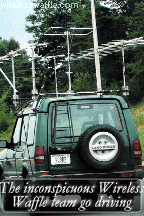 On these 'empty' frequencies what you will hear most of the time is 'ssssssshhh' (a.k.a. white noise). If there are others travelling with you on the journey, this can be extremely annoying, so this is a sport best played alone. However, from time to time, this noise will be punctuated by snippets of speech or music (which for a non radio funster, can be even more annoying than the noise).
On these 'empty' frequencies what you will hear most of the time is 'ssssssshhh' (a.k.a. white noise). If there are others travelling with you on the journey, this can be extremely annoying, so this is a sport best played alone. However, from time to time, this noise will be punctuated by snippets of speech or music (which for a non radio funster, can be even more annoying than the noise).
If you get enough speech or music to be able to identify the station, or (on occasion) get a signal for long enough, and strong enough, for RDS to appear, bingo, you've just landed yourself a DX catch. Even catching the language of the station and the style of programming may, in some cases, be sufficient to lead to an identification, especially if there are only a few stations in that language on a given frequency.
This is how Omroep Zeeland was identified. The language heard was clearly dutch, and it was a speech based program with occasional oldies music. According to fmscan.org, the following FM stations are within tropospheric range on a 'flat' band (i.e. a few 100 km at most), operate on 87.9 MHz, and are in the dutch language: There are no dutch speaking stations in Belgium on 87.9 and no other countries that speak dutch! Omroep Zeeland is a speech and oldies style station, where as Radio 10 is a music based station and although it plays oldies, it has far less speech content. Thus, identification of the snippets heard is relatively straightforward.
There are no dutch speaking stations in Belgium on 87.9 and no other countries that speak dutch! Omroep Zeeland is a speech and oldies style station, where as Radio 10 is a music based station and although it plays oldies, it has far less speech content. Thus, identification of the snippets heard is relatively straightforward.
One thing that did crop up whilst driving around listening to 87.9 and 87.5, was the number of strong signals that popped up with a strange variety of content from stories being read, to asian music and hip-hop. Whilst it would be easy to dismiss these as pirate radio stations, the fact that they appeared and disappeared relatively quickly tends to suggest that they were, in fact, 'iTrip' type transmitters connected to people's mobile phones, to allow music to be played on their car radios. These two frequencies are obvious choices for such devices given that they are not used for (legal) broadcasting in the UK.
An additional fun game that you can therefore give a go, is trying to work out which car driver is listening to which material. Who is the hip-hop fan, and who is listening to the x-rated audio book? Give 87.5 a try for this as it's repleat with lots of these iTrip type devices. I know what you are up to EK59 ESX!
 On a recent car journey across the UK, for example, Wireless Waffle was able to add Omroep Zeeland to the FM DX Logbook, despite radio reception conditions being what can only be described as 'as flat as the mountains of the Netherlands'. We thought, though, that it might be interesting to share our experiences of how a car journey can be turned into a DX-pedition (as they are known), safely and easily, as well as some very intriguing and unusual results.
On a recent car journey across the UK, for example, Wireless Waffle was able to add Omroep Zeeland to the FM DX Logbook, despite radio reception conditions being what can only be described as 'as flat as the mountains of the Netherlands'. We thought, though, that it might be interesting to share our experiences of how a car journey can be turned into a DX-pedition (as they are known), safely and easily, as well as some very intriguing and unusual results.Playing around with your car radio whilst driving is probably a bad idea, and not that safe either, so the best thing to do is to tune to just a single frequency and see what crops up. How do you choose which frequency to tune to? In the example of Omroep Zeeland above, it was 87.9 MHz. This frequency is not used by any FM transmitters in the UK (check the list at frequencyfinder.org.uk) and as such, any transmissions you do hear are either going to be pirate radio stations, or iTrip type devices (more of which later). Many of the frequencies at the bottom end of the FM band including 87.8 and 87.6 are also good candidates but there may be others, depending on which area you live in (105.0 and 105.1 are also relatively ununsed in much of the UK).
 On these 'empty' frequencies what you will hear most of the time is 'ssssssshhh' (a.k.a. white noise). If there are others travelling with you on the journey, this can be extremely annoying, so this is a sport best played alone. However, from time to time, this noise will be punctuated by snippets of speech or music (which for a non radio funster, can be even more annoying than the noise).
On these 'empty' frequencies what you will hear most of the time is 'ssssssshhh' (a.k.a. white noise). If there are others travelling with you on the journey, this can be extremely annoying, so this is a sport best played alone. However, from time to time, this noise will be punctuated by snippets of speech or music (which for a non radio funster, can be even more annoying than the noise). If you get enough speech or music to be able to identify the station, or (on occasion) get a signal for long enough, and strong enough, for RDS to appear, bingo, you've just landed yourself a DX catch. Even catching the language of the station and the style of programming may, in some cases, be sufficient to lead to an identification, especially if there are only a few stations in that language on a given frequency.
This is how Omroep Zeeland was identified. The language heard was clearly dutch, and it was a speech based program with occasional oldies music. According to fmscan.org, the following FM stations are within tropospheric range on a 'flat' band (i.e. a few 100 km at most), operate on 87.9 MHz, and are in the dutch language:
- Omrope Zeeland, transmitter site: Goes, transmitter power: 15kW
- Radio 10, transmitter site: Vught, transmitter power: 7.9 kW
 There are no dutch speaking stations in Belgium on 87.9 and no other countries that speak dutch! Omroep Zeeland is a speech and oldies style station, where as Radio 10 is a music based station and although it plays oldies, it has far less speech content. Thus, identification of the snippets heard is relatively straightforward.
There are no dutch speaking stations in Belgium on 87.9 and no other countries that speak dutch! Omroep Zeeland is a speech and oldies style station, where as Radio 10 is a music based station and although it plays oldies, it has far less speech content. Thus, identification of the snippets heard is relatively straightforward.One thing that did crop up whilst driving around listening to 87.9 and 87.5, was the number of strong signals that popped up with a strange variety of content from stories being read, to asian music and hip-hop. Whilst it would be easy to dismiss these as pirate radio stations, the fact that they appeared and disappeared relatively quickly tends to suggest that they were, in fact, 'iTrip' type transmitters connected to people's mobile phones, to allow music to be played on their car radios. These two frequencies are obvious choices for such devices given that they are not used for (legal) broadcasting in the UK.
An additional fun game that you can therefore give a go, is trying to work out which car driver is listening to which material. Who is the hip-hop fan, and who is listening to the x-rated audio book? Give 87.5 a try for this as it's repleat with lots of these iTrip type devices. I know what you are up to EK59 ESX!
2 comments
( 1301 views )
| permalink
| 



 ( 3.2 / 80947 )
( 3.2 / 80947 )




 ( 3.2 / 80947 )
( 3.2 / 80947 )
Thursday 9 January, 2020, 15:46 - Much Ado About Nothing
Posted by Administrator
Wireless Waffle may appear to have gone quiet over the last few months, however this is because we have been working on a very major Artificial Intelligence (AI) programme to automate the writing of articles for the site.Posted by Administrator
Being a new decade, in 2020, with the advent of AI and neural nets, it is now possible for computers to author text for articles such as this. Take, for example, this excellent recipe for Jello (jelly to those of us in Europe) written by a suitable trained computer-brain.
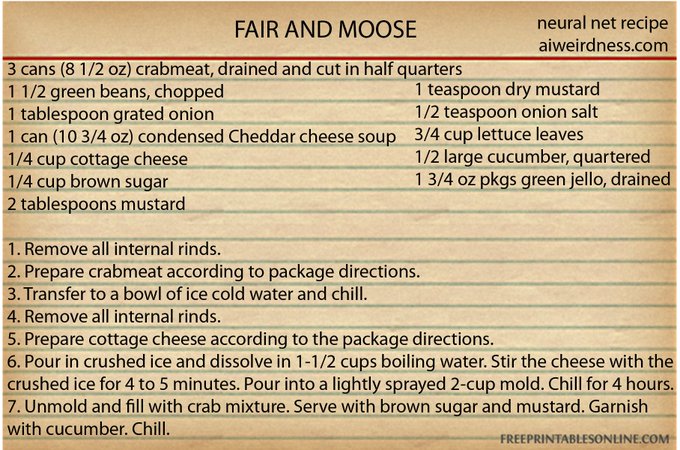
Once all the internal rinds are removed, and the condensed Cheddar cheese soup is, er, umoulded (though the soup, and various other ingredients, are only in the list of ingredients, not the complete recipe), you can add the onion and brown sugar, and you're good to go.
The Wireless Waffle Automatic Article Author (W2A3) is somewhat more intelligent than the algorithm that wrote the jello recipe. In addition to having a very wide vocabulary, you can select the level of 'complexity' of the article, and the level of 'wirelessness', to have a story written of your own, preferred level of difficulty and technicality. Just select a level from the pull-down menus below and click 'generate' and you're own, personal wireless article will be generated. Try not to spill any lettuce or mustard on it.
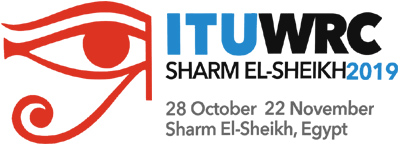 Though it may have passed most of the international news channels by, the world's radio spectrum regulators and associated government departments and ministers have just signed away the results of the 2019 World Radiocomminication Conference (WRC-19) held in Sharm El Sheikh, Egypt. This 4 week long event is where international decisions on the use of the radio spectrum take place. Or at least that's the theory. All 'decisions' have to be driven by consensus, which means that everyone must agree and with so many divergent views on topics as wide ranging as more spectrum for 5G mobile services, to globally harmonising spectrum for railway communications, there is lots to discuss. There were around 20 items on the agenda for the conference.
Though it may have passed most of the international news channels by, the world's radio spectrum regulators and associated government departments and ministers have just signed away the results of the 2019 World Radiocomminication Conference (WRC-19) held in Sharm El Sheikh, Egypt. This 4 week long event is where international decisions on the use of the radio spectrum take place. Or at least that's the theory. All 'decisions' have to be driven by consensus, which means that everyone must agree and with so many divergent views on topics as wide ranging as more spectrum for 5G mobile services, to globally harmonising spectrum for railway communications, there is lots to discuss. There were around 20 items on the agenda for the conference.Of particular interest to radio amateurs was agenda item 1.1, which concerned:
the allocation of the frequency band 50-54 MHz to the amateur service in Region 1
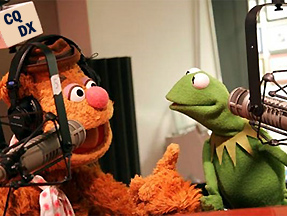 Radio amateurs have requested that the whole frequency range from 50 to 54 MHz is allocated to them on a primary basis in ITU Region 1 which is Europe, the Middle East and Africa. At present, in the ITU Radio Regulations, which dictate which frequencies are allocated to which services, 50 - 54 MHz is allocated to radio amateurs on a primary basis in Regions 2 (the Americas) and 3 (Asia/Pacific), and the idea was to align the band in every region. In Region 1 the frequencies are allocated to broadcasting as well as (in some countries) to radiolocation, land mobile and fixed (point-to-point) services, but not to radio amateurs (unless national administrations have unilaterally decided to allow them). Only in Botswana, Eswatini, Lesotho, Malawi, Namibia, the Democratic Republic of Congo, Rwanda, South Africa, Zambia and Zimbabwe does the band have any allocation to radio amateurs in the existing Radio Regulations.
Radio amateurs have requested that the whole frequency range from 50 to 54 MHz is allocated to them on a primary basis in ITU Region 1 which is Europe, the Middle East and Africa. At present, in the ITU Radio Regulations, which dictate which frequencies are allocated to which services, 50 - 54 MHz is allocated to radio amateurs on a primary basis in Regions 2 (the Americas) and 3 (Asia/Pacific), and the idea was to align the band in every region. In Region 1 the frequencies are allocated to broadcasting as well as (in some countries) to radiolocation, land mobile and fixed (point-to-point) services, but not to radio amateurs (unless national administrations have unilaterally decided to allow them). Only in Botswana, Eswatini, Lesotho, Malawi, Namibia, the Democratic Republic of Congo, Rwanda, South Africa, Zambia and Zimbabwe does the band have any allocation to radio amateurs in the existing Radio Regulations.Following the machinations at WRC-19, the radio amateurs have been granted a secondary allocation across Region 1 in the frequency range 50 - 52 MHz, with primary allocations in some or all of the range 50 - 54 MHz in a limited number of new countries. A secondary allocation means that the amateurs must not cause interference to any primary services (i.e. broadcasting and land mobile) and must accept interference from them, but it's a step forwards towards a global expansion of the 6 metre band.
This does not mean that the band will be available in each and every country immediately. First, each country's administration or regulator needs to update their national frequency allocation table to include the new band. This can take anything from a few months to a few years. There are still some countries who have not yet implemented the results of the previous WRC in 2015, despite it being completed 4 years ago. So don't hold your breath hoping to use the band when on holiday in Ouagadougou, it may be a long time before this new band is widely available.
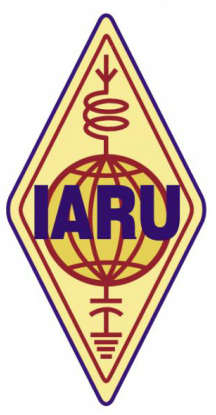 The next task for the International Amateur Radio Union (IARU) who work tirelessly on behalf of radio amateurs at events such as WRC-19 is to deal with Agenda Items 1.2 and 9.1.2 of the next WRC in 2023. Agenda Item 1.2 is entitled:
The next task for the International Amateur Radio Union (IARU) who work tirelessly on behalf of radio amateurs at events such as WRC-19 is to deal with Agenda Items 1.2 and 9.1.2 of the next WRC in 2023. Agenda Item 1.2 is entitled:to consider identification of the frequency bands ... 10.0-10.5 GHz for International Mobile Telecommunications (IMT), including possible additional allocations to the mobile service on a primary basis... (N.B. this applies in Region 2, i.e. the Americas, only)
This includes a secondary Amateur allocation between 10.0 and 10.5 GHz, and a secondary Amateur-Satellite allocation between 10.45 and 10.5 GHz (as used by the already infamous Es'Hail-2 (a.k.a. QO-100), the first geostationary satellite with an Amateur radio transponder. Whilst the allocation of the band for IMT (5G) services does not preclude the Amateur service, in reality, a band full of a dense network of base stations and handsets would make it nigh-on impossible to be used for amateur radio and the band may be lost, in exactly the same way that the 2.3 GHz and 3.4 GHz bands were.
Agenda Item 9.1.2 is entitled:
Review of the amateur service and the amateur-satellite service allocations in the frequency band 1 240-1 300 MHz to determine if additional measures are required to ensure protection of the radionavigation-satellite (space-to-Earth) service operating in the same band...
 The IARU will need to stave off pressure to remove (or otherwise reduce) the radio amateur secondary allocation on the frequencies 1240 - 1300 MHz (the 23 cm band) as it is claimed by the European Commission that amateurs may cause interference to their Galileo satellte navigation system. Not, it is worth pointing out, the everyday service used by smart phones and in-car sat-navs, but an additional service for specialist users.
The IARU will need to stave off pressure to remove (or otherwise reduce) the radio amateur secondary allocation on the frequencies 1240 - 1300 MHz (the 23 cm band) as it is claimed by the European Commission that amateurs may cause interference to their Galileo satellte navigation system. Not, it is worth pointing out, the everyday service used by smart phones and in-car sat-navs, but an additional service for specialist users. 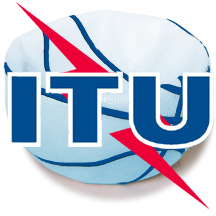 The argument goes that there was once an amateur television repeater in the band which caused interference. Once - and it was resolved very quickly. But that is enough to raise concerns of potential wider future interference problems. The Commission therefore want to throw the amateurs out of the spectrum. The amateur allocation is secondary, so they must not cause interference, and so the Galileo service is already protected, but that is not always enough for everyone. The ITU giveth with one hand, and threaten to take away with two others. Was it ever any different?
The argument goes that there was once an amateur television repeater in the band which caused interference. Once - and it was resolved very quickly. But that is enough to raise concerns of potential wider future interference problems. The Commission therefore want to throw the amateurs out of the spectrum. The amateur allocation is secondary, so they must not cause interference, and so the Galileo service is already protected, but that is not always enough for everyone. The ITU giveth with one hand, and threaten to take away with two others. Was it ever any different?Friday 15 November, 2019, 06:15 - Spectrum Management, Much Ado About Nothing
Posted by Administrator
Posted by Administrator
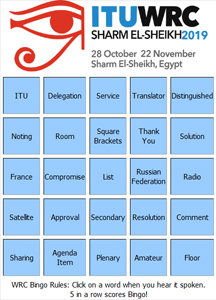 Over 1000 delegates are currently slogging it out at the World Radiocomminication Conference taking place in Sharm El Sheikh, Egypt. The conference can be extremely tedious as various working groups sit in laborious meetings working out whether 'and' or 'or' should be used in a sentence.
Over 1000 delegates are currently slogging it out at the World Radiocomminication Conference taking place in Sharm El Sheikh, Egypt. The conference can be extremely tedious as various working groups sit in laborious meetings working out whether 'and' or 'or' should be used in a sentence.To try and help with the boredom, Wireless Waffle presents, ITU WRC Bingo.
The rules are very simple. Whilst sitting in a meeting, every time that a word on your bingo card is spoken, click on it and it will be illuminated. If you get 5 words in a row (vertically, horizontally, or diagonally) you have achieved BINGO! At this point, the rules require you to stand up and shout either 'bingo' or 'house' but perhaps you might wish, instead, to ask the chairman for the floor and quietly state:
Subject to confirmation by the sub-working group, and noting the necessary primary resolution, I resolve to believe that the correct terminology for that which is in front of me, is 'Bingo'!


